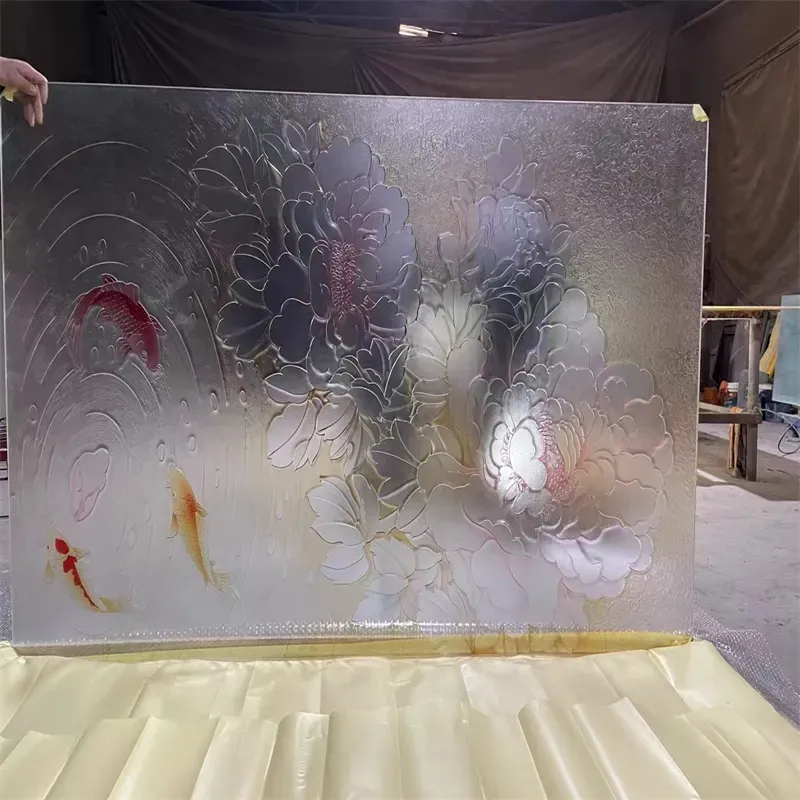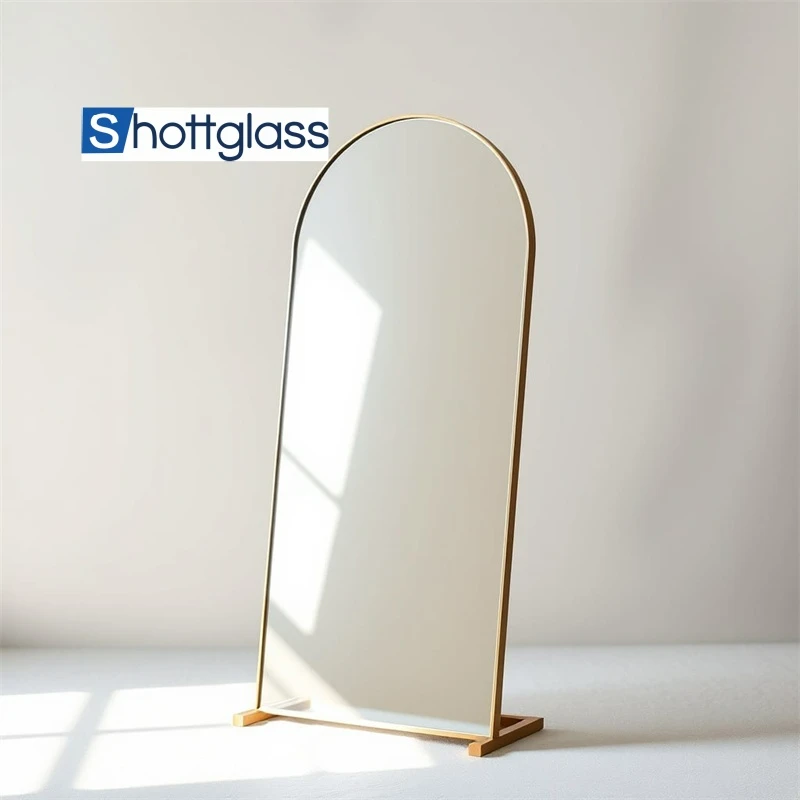Apr . 16, 2025 15:39 Back to list
Frosted Glass Applications in Modern Design
Frosted glass has become a fundamental material in contemporary architecture and interior design due to its versatility, aesthetic appeal, and functional benefits. The process of frosting glass involves either acid etching or sandblasting to create a translucent surface that diffuses light while maintaining privacy. This article explores the primary applications of frosted glass, focusing on its use in residential, commercial, and industrial settings. Additionally, it examines the different types of frosted glass available, including acid-etched laminated glass, acid-etched toughened glass, and sandblasted privacy glass, among others.
Frosted Glass Use in Residential Spaces
Frosted glass has become an essential element in residential design due to its unique combination of privacy and light diffusion properties. In bathrooms, it is commonly used for shower enclosures, windows, and partition walls. The satin sandblasted glass variant provides a smooth, uniform finish that obscures visibility while maintaining brightness in the space. Unlike clear glass, which requires additional window treatments for privacy, frosted glass eliminates the need for curtains or blinds, making it a low-maintenance solution.
For interior doors, particularly those leading to bedrooms or home offices, clear acid-etched glass offers a balance between openness and seclusion. The etching process creates a semi-transparent surface that softens incoming light while preventing direct visibility. This makes it ideal for homes where natural light flow is prioritized without compromising personal privacy.
Kitchen cabinetry is another area where frosted glass excels. Upper cabinet doors made with premium anti-glare etched glass reduce harsh reflections from artificial lighting while allowing a subtle view of stored items. This application combines functionality with modern aesthetics, particularly in contemporary and minimalist kitchen designs.
In living areas, frosted glass is often used for room dividers, especially in studio apartments or open-concept homes. Sliding panels or fixed screens made from sandblasted privacy glass create a visual separation between living, dining, and workspaces without making the area feel enclosed. Additionally, frosted glass balustrades on staircases and balconies enhance safety while contributing to an airy, unobstructed visual flow.
Frosted Glass Use in Commercial Environments
The demand for frosted glass in commercial settings has grown due to its ability to merge functionality with sophisticated design. In office spaces, glass partitions made from etched tempered glass are widely used to define work areas without sacrificing the open-plan concept. These partitions provide acoustic insulation to some degree while allowing natural light to permeate the workspace, contributing to a more productive and visually cohesive environment.
Retail stores benefit from frosted glass in multiple ways. Display cases with anti-glare etched glass minimize reflections from spotlights, ensuring that products remain visible to customers. Frosted glass is also used for storefront signage and decorative panels, where its matte finish adds a premium, understated elegance. Some high-end boutiques use backlit frosted glass logos or directional signage to create a subtle yet impactful brand presence.
In the hospitality sector, hotels and restaurants incorporate frosted glass in lobby dividers, elevator doors, and restroom enclosures. The durability of acid etched laminated glass makes it suitable for high-traffic areas, as it resists scratches and maintains its appearance over time. Conference rooms and private dining areas often feature frosted glass doors or wall inserts, allowing light to pass through while ensuring discretion during meetings or events.
Medical clinics and corporate reception areas also utilize frosted glass for privacy screens and check-in counters. The semi-opaque quality of the material helps maintain confidentiality while keeping spaces bright and welcoming. Additionally, frosted glass whiteboards in meeting rooms serve a dual purpose—providing a writable surface while maintaining a sleek, professional look.
Frosted Glass Use in Industrial and Specialty Applications
Beyond architectural and decorative uses, frosted glass plays a critical role in industrial and technical applications. Laboratories and cleanrooms frequently use acid-etched toughened glass for observation windows and protective barriers. The frosted surface reduces glare from high-intensity lighting, which is crucial for precision work in scientific and medical environments.
In the automotive sector, frosted glass is employed in sunroofs and side windows to regulate light transmission and reduce solar heat gain. The tempering process ensures that the glass meets stringent safety standards, preventing dangerous shattering in case of impact. Some luxury vehicles also incorporate frosted glass for interior trim elements, adding a refined touch to cabin design.
Electronics manufacturers utilize premium anti-glare etched glass for touchscreens, control panels, and display covers. The etched surface minimizes fingerprints and glare, improving readability in various lighting conditions. This is particularly important for devices used outdoors or in brightly lit industrial settings.
Art and custom design projects increasingly feature frosted glass as a medium for etched artwork, decorative panels, and lighting fixtures. Satin sandblasted glass is commonly used for backlit wall installations, where the diffused glow creates a soft, ambient lighting effect. Designers also use frosted glass for corporate logos, wayfinding signage, and artistic room dividers, demonstrating its versatility in both functional and aesthetic applications.
The material’s adaptability extends to security installations, where frosted glass is used in reinforced partitions for banks and government buildings. The combination of laminated layers and etching ensures both privacy and protection, making it a reliable choice for high-security environments.
Frosted glass is a highly functional and visually appealing material with diverse applications across residential, commercial, and industrial sectors. Its ability to provide privacy, diffuse light, and enhance aesthetics makes it a preferred choice in modern design. With variations such as acid etched laminated glass, etched tempered glass, and sandblasted privacy glass, it offers solutions tailored to different needs. As architectural trends continue to evolve, frosted glass remains a key element in creating sophisticated and practical spaces.

-
Types of Reflective Glass
NewsNov.17,2025
-
What Is Dichroic Glass?
NewsNov.17,2025
-
Smart LED mirrors can have touch controls
NewsNov.17,2025
-
Laminated glass improves energy efficiency
NewsNov.17,2025
-
Insulated glass enhances building comfort
NewsNov.17,2025
-
Acid etched glass offers elegant privacy
NewsNov.17,2025
Related PRODUCTS














